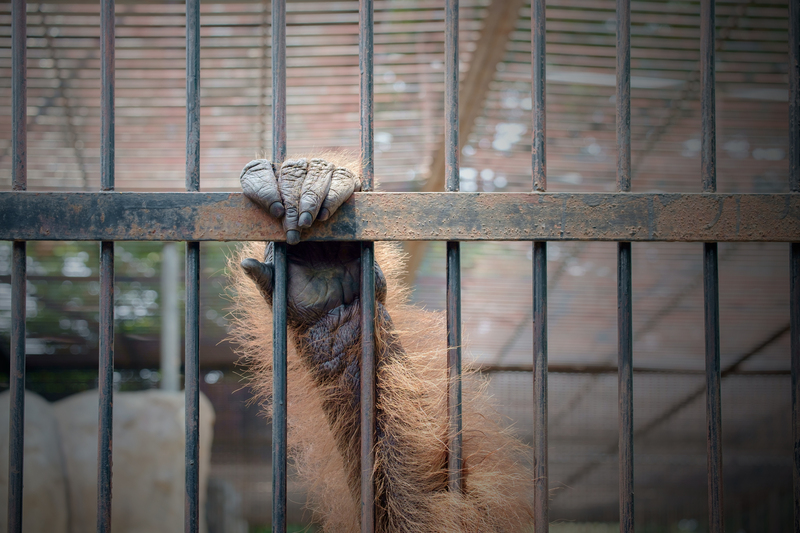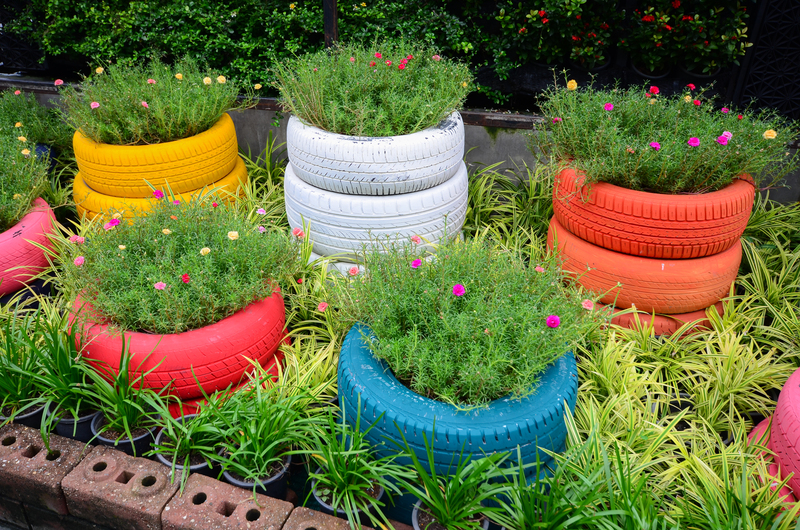Environmentally Safe Ways to Get Rid of Old Cookware
Are you wondering what to do with drawers full of battered pans, scratched non-stick skillets, or rusty pots you no longer use? Disposing of old cookware isn't as simple as tossing it into the trash. Traditional kitchen items, including stainless steel pots, non-stick pans, ceramic bakeware, and cast iron skillets, can negatively impact the environment if sent to landfills. That's why adopting environmentally safe ways to get rid of old cookware is essential for eco-conscious households and sustainable living.
Why Proper Cookware Disposal Matters
Every year, millions of tons of unwanted cookware--from aluminum pans to non-stick frying pans--accumulate in landfills. Conventional disposal can contribute to:
- Toxic chemical leaching: Non-stick coatings and aluminum sometimes release harmful substances when broken down.
- Resource wastage: Most cookware is made from valuable materials like stainless steel, copper, or ceramic, all of which can be recycled or repurposed.
- Landfill congestion: Kitchen ware adds bulk to landfill waste, slowing decomposition and increasing environmental strain.

Assessing Your Cookware: Can It Be Saved?
Before seeking environmentally friendly ways to dispose of cookware, evaluate if your cookware is truly beyond use. Here are steps to consider:
- Maintenance: Sometimes, a thorough cleaning, re-seasoning (for cast iron), or removing rust restores old pans to like-new condition.
- Repair: Handles can be tightened or replaced and some scratches gently buffed out. Ceramic chips might be mended with food-safe adhesive.
- Re-seasoning: Cast iron and carbon steel skillets can regain their non-stick surface and shine with a simple oven re-seasoning process.
How to Safely Get Rid of Old Pots and Pans
1. Recycle Responsibly
Certain cookware materials, including stainless steel, aluminum, copper, and cast iron, are highly recyclable. Recycling is among the most environmentally safe ways to get rid of old cookware.
- Contact Local Recycling Centers: Not all facilities accept cookware, but most scrap metal recyclers do. Search for metal recycling near me and ask about acceptable items.
- Remove Non-Metal Elements: Take off plastic handles or glass lids before recycling metal parts. This makes processing easier and reduces contamination.
- Sort by Material: Separate aluminum, copper, stainless steel, and iron cookware for maximum recycling efficiency.
Important: Non-stick pans present challenges due to PTFE or Teflon coatings; many facilities only accept uncoated metal. Call beforehand to confirm.
2. Donate Gently Used Cookware
If your cookware remains functional (no deep scratches, chips, or flaking), donating your old cookware is an eco-friendly option that supports communities and extends product life.
- Charity Shops & Nonprofits: Organizations like Goodwill, Salvation Army, or local shelters often accept gently used pots and pans.
- Community Kitchens: Soup kitchens, food pantries, and shelters may need extra cookware for meal preparation.
- Schools or Art Programs: Some educational or art centers reuse pans for crafts or classroom activities.
Tip: Always clean donated cookware thoroughly and check with organizations about their current needs and donation policies.
3. Repurpose Old Cookware
One of the most sustainable ways to get rid of old pans is to repurpose or upcycle them:
- Planters or Garden Decor: Old pots and pans make excellent outdoor planters or quirky garden features. Drill drainage holes in the bottom for proper water flow.
- Storage Bins: Skillets and larger cookware can organize craft supplies, tools, or office items.
- Wall Art & Hooks: Decorative pans, especially copper or retro pieces, add vintage charm to kitchens when hung on walls.
- Candle Holders or Bird Feeders: Bakeware, such as muffin tins or loaf pans, can be creatively transformed into candle molds or bird feeders.
Upcycling adds a creative touch to your home while minimizing waste.
4. Host a Cookware Swap or Garage Sale
Organize a cookware swap among friends, neighbors, or your local community. You'd be surprised how many people need extra fry pans or baking dishes! Garage or yard sales can also keep dishes, pots, and pans in circulation and prevent waste.
- Post Online: Use social media groups or marketplace platforms to advertise available items.
- Pair With Recipes: Encourage re-use by including recipe cards with cookware sales or donations.
5. Use Take-Back Programs
Certain brands and retailers have introduced take-back programs as part of their sustainability mission. For example:
- Sur La Table Cookware Recycling: Some stores accept used pots and pans for recycling at select events.
- GreenPan Recycling Initiative: Brands like GreenPan offer mail-in programs for old non-stick cookware.
- Local Housewares Retailers: Check with regional or national chains about similar trade-in or recycling schemes.
When buying new cookware, consider choosing brands with robust sustainability and manufacturer responsibility programs.
What About Non-Stick Cookware Disposal?
Non-stick cookware--most often coated with Teflon or other synthetic finishes--poses unique challenges for environmental disposal. Standard recycling facilities rarely accept these items due to chemical coatings.
- Check for Specialized Recycling: A few recycling plants manage non-stick pans, using high heat to safely remove coatings. Search your area for such options.
- Manufacturer Return Programs: Participate in brand-specific take-back schemes if available, as described above.
- Upcycle Whenever Possible: Even with worn-out surfaces, non-stick pans can be converted into planters or wall decor, minimizing waste.
Never burn or bury non-stick cookware, as this can release toxic fumes and chemicals into the environment.
How to Dispose of Cookware Made from Other Materials
Cast Iron
- Rescue & Restore: Even rusty, old-looking cast iron can be re-seasoned and restored to useful condition. Scrub, oil, and bake the pan to revive its surface.
- Recycle or Scrap: If truly beyond repair, check with scrap metal yards for recycled cast iron programs.
Ceramic & Glass Bakeware
- Donation: Donate undamaged pieces to second-hand stores or community centers.
- Recycle: Some local facilities accept oven-safe glass, but always confirm first. Standard recycling for food jars does not accept Pyrex or ceramics.
- Repurpose: Turn old dishes into serving trays, garden labels, or mosaic art for your home.
Aluminum Cookware
- Recycling: Aluminum is prized for easy recycling (and high demand in the scrap market). Remove all non-metal components first.
Copper Pans
- Scrap Metal: Copper fetches good prices at scrap yards. Ensure that pans are solid copper and remove any attached non-copper hardware before recycling.
- Art Projects: Vintage copper pans are popular as decor; consider upcycling into planters or decorative trays.
What To Avoid: Improper Cookware Disposal
- Household Trash: Avoid sending cookware--particularly non-stick and those with synthetic coatings--to general landfill sites. These materials degrade slowly and leach chemicals.
- Burning: Burning metal or Teflon cookware is hazardous and releases toxins.
- Dumping Outdoors: Abandoned cookware creates environmental hazards and litter in communities and ecosystems.
Tips for Buying Eco-Friendly Cookware in the Future
- Choose Durable Materials: Stainless steel, cast iron, and enameled cookware have long lifespans and are easily restored, extending utility before disposal is needed.
- Avoid Hazardous Coatings: Opt for toxin-free, ceramic, or uncoated surfaces when possible.
- Research Manufacturer Policies: Support brands with robust recycling, take-back, or repair programs.
- Invest in Multi-Purpose Cookware: Fewer specialty items mean less eventual waste.

Frequently Asked Questions About Environmentally Safe Cookware Disposal
Can I put old pots and pans in the recycling bin?
Usually, curbside recycling does not accept cookware, especially if mixed materials are involved (e.g., plastic handles, non-stick coatings). Contact your local scrap metal recycling center for proper drop-off locations.
What should I do with rusty cast iron pans?
Unless the pan is cracked or badly warped, re-seasoning almost always revives rusty cast iron. If repair is impossible, recycle via a scrap metal facility.
Is it okay to donate cookware with minor scratches?
Yes, as long as pans are safe to use (no exposed metal on non-stick surfaces, non-chipped ceramic, etc.), donation is an excellent environmentally responsible solution.
Can I compost ceramic or glass cookware?
No, neither material is compostable or biodegradable. Focus on donation, upcycling, or recycling (if supported by your area) instead.
Conclusion: Make Your Cookware Disposal Count for the Planet
Disposing of old kitchenware responsibly isn't just an act of decluttering-it's an opportunity to make eco-friendly choices that reduce landfill waste, encourage recycling, and help your community. Whether you recycle old pots and pans, donate usable cookware, or repurpose items into unique home projects, environmentally safe ways to get rid of old cookware are available to everyone. Be proactive, and let your kitchen clean-out inspire a greener, more sustainable home!
For more tips on sustainable living, follow our eco-friendly kitchen series and help support a cleaner, healthier planet--one pot at a time.